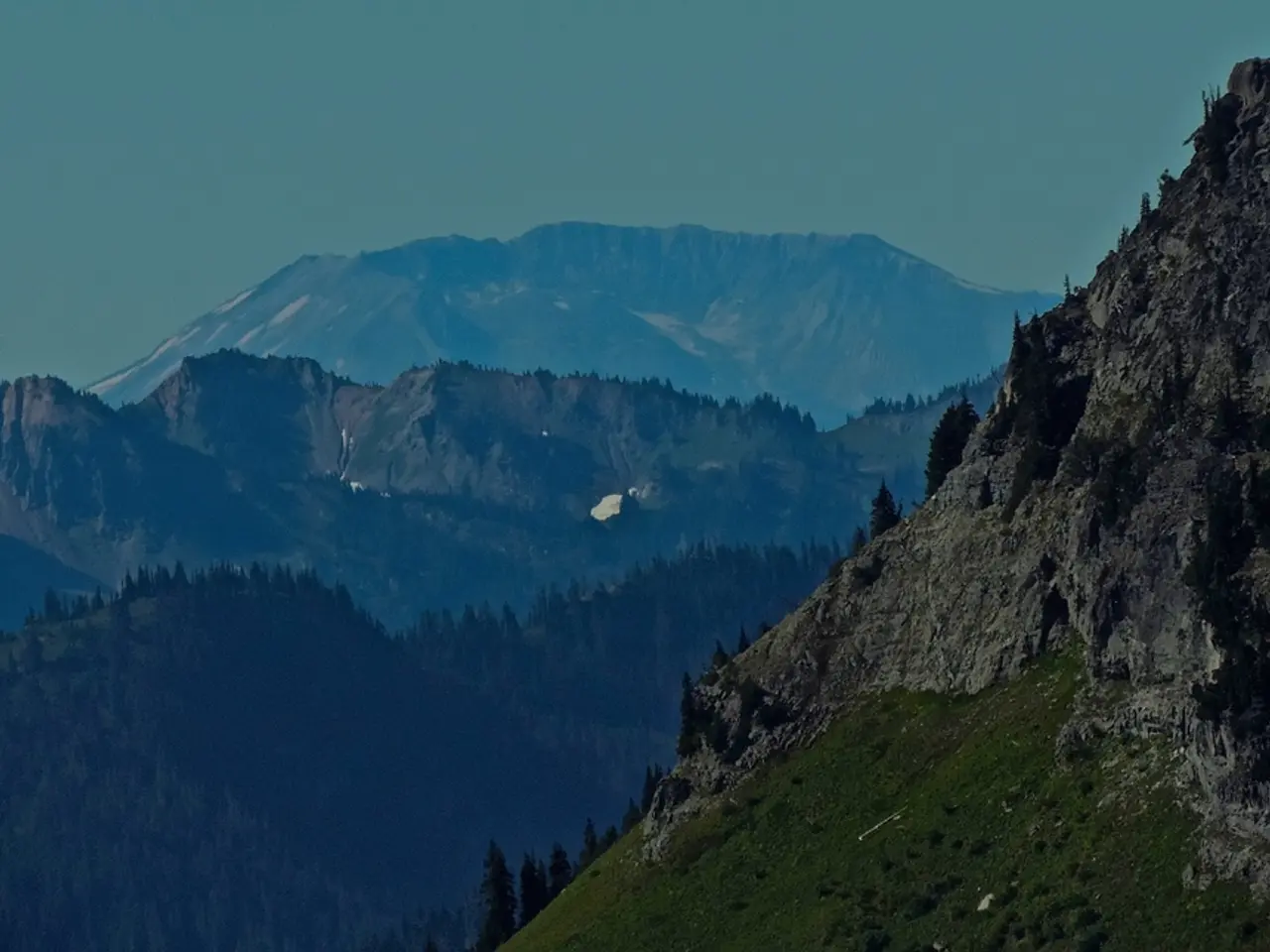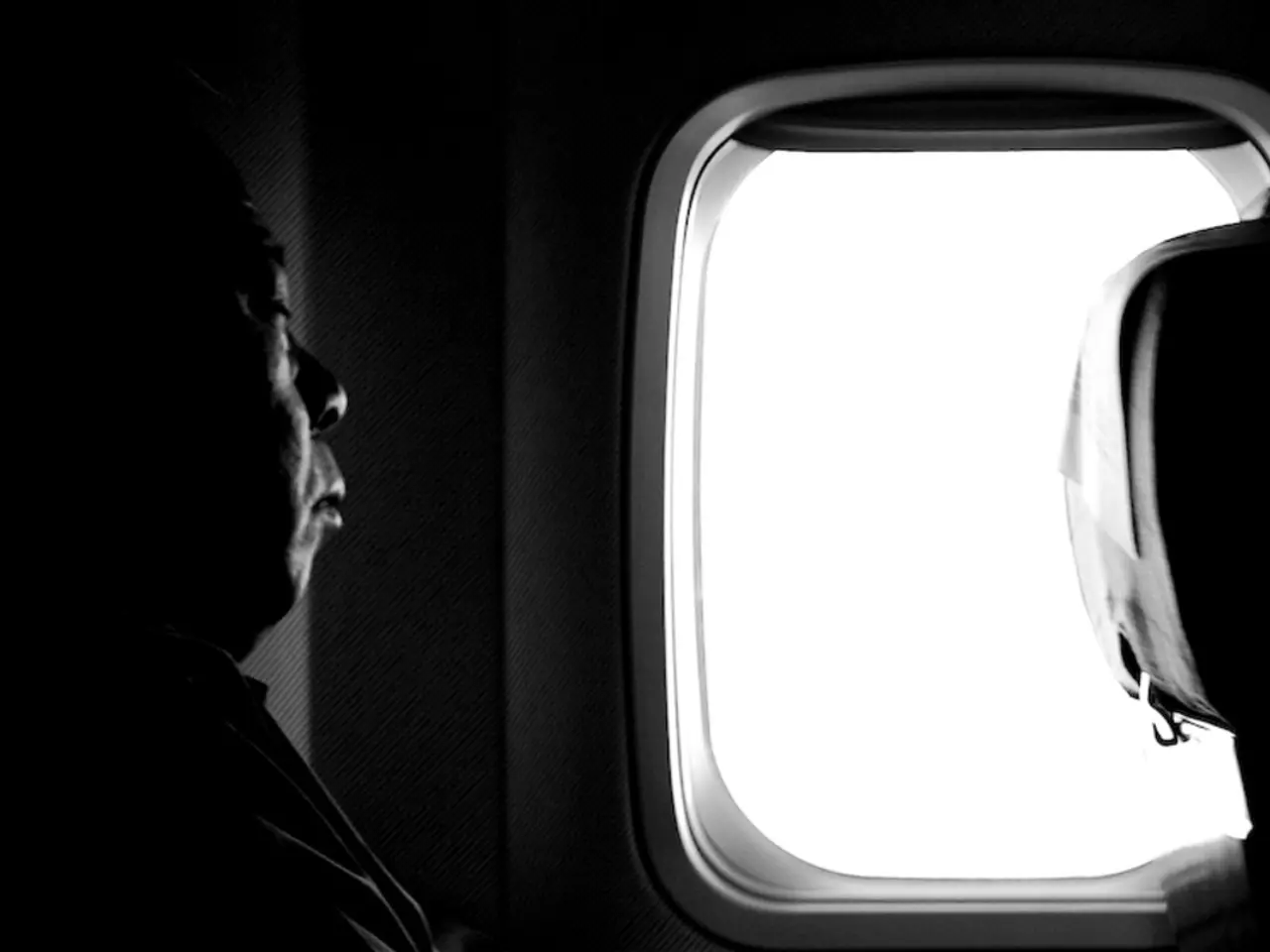In this Chilean desert wilderness, a traveler encounters a unique feeling of isolation - an uncanny solitude, typically absent in other national parks.
Waking Up Wild and Wondering: My Journey Through Patagonia National Park
It's a foggy, wee-hour start as I find myself sandwiched between screamers, both kids and gruff men, on a cramped Latam flight bound for Balmaceda. My destination: Patagonia National Park, a sliver of grandness nestled along the Eastern flank of the Pacific Ocean. Reaching this adventure haven is a nightmare, yet it's been one for decades, despite its remote, rugged charm.
Five days ago, I'd left the scorching hot Atacama Desert. Since then, it's been an odyssey complete with a marathon through London, a 15-hour flight to Santiago, three domestic flights, and a lengthy, bumpy drive along The Carretera Austral, Chile's famed Route 7. Was I ready? Absso-fricking-lutely not.
The wind howled like the wrath of Pachamama as I embarked on my seven-hour journey. Furious clouds towered, snagging on mountain peaks, pouring down torrents that soaked me through and through. Yet, as the storm dissipated, the most pastorally poetic sight greeted me: a stunning rainbow arcing over the Austral Valley, an electric blue lake shimmering in the distance.
Tumbling down the horizon, thick forests and quaint towns unfolded, eventually leading to the largest and deepest lake in Chile, Lago General Carrera. For two hours, I drove alongside this vast expanse of electric blue, finally arriving at my final destination: the deserted, isolated Parc Nacional Patagonia. A place cut off from civilization for most of the year due to the treacherous razor-sharp glaciers of the Northern Patagonian Ice Sheet.
Welcome to the heart of the Chacabuco Valley, in Aysen, Chile. The desolate landscape, strikingly devoid of life, hints at the presence of a few chacabuco guanacos, Patagonia's national symbol. This land, once heavily overgrazed by local farmers, has been reclaimed by the region's native species.
I find solace in the Explora Lodge, a former cattle farm transformed by founder and Chilean entrepreneur, Pedro Ibáñez, in 2021. With its western vibe, plentiful rugs, soulful windows, lavish wood carvings, and cozy poofs by the fire, the lodge provides the perfect sanctuary amid the 752,000 acres of wild, sprawling isolation.
This sanctuary is home to elusive pumas, giant condors, endangered Andean hideaways, and the exceptionally elusive, one-percent-rare South American ostrich, the Ñandú. It was this sanctuary that so enchanted the late Doug Tompkins and his wife, Kristine.
Kristine recounted: "We'd travel to Argentina every summer and pass through this jewel of a valley called Valle Chacabuco, getting permission to camp from the estancia. Picture a huge east-west grassland surrounded by mountains and tiny lakes. It was pretty special to us. When they decided to sell, we saw an incredible opportunity - to recover these immense grasslands for native species, like the guanaco, Darwin's rhea, and puma, but also to connect it to existing parklands of lesser status to the north and south, creating one enormous park."
The Tompkins Conservation, founded by the couple in 1994, aimed to save and restore wildlands across Chile and Argentina, their credentials backed by their successful careers in the clothing industry. Doug made his fortune with The North Face and Esprit, while Kristine was the former CEO of Patagonia. And conservation was always at the heart of their love story.
The transformation of the once severely degraded park into a verdant paradise was no easy feat. Ongoing efforts to rejuvenate the depleted forests, remove over 500 miles of fencing, and rehome the remaining sheep were met with resistance from locals. But today, with high re-employment opportunities offering former poachers and gauchos new careers as rangers and conservationists, most families support the project.
Despite its relative obscurity compared to other Patagonian National Parks, particularly Torres del Paine and Parque Nacional Los Glaciares, Patagonia National Park remains an unspoiled heaven for those seeking a unique blend of landscapes - from dramatic desert zones to lush forests, pristine lakes, and glacier-capped peaks.
With my guide Micaela Diaz Rossi, I embarked on a quest to spot the elusive Andean deer. As we traversed the land, timeless geological formations took my breath away. Continuously shifting tectonic plates have created remarkable, one-of-a-kind landscapes, carpeted with wild strawberries, yarrow, dandelion, lichen, old man's beard, Turkey tail fungus, and Chinese lantern, among other vibrant flora.
Our hike to the Baker and Chacabuco Rivers with Pablo Andres Vega Ortega unearthed a somber part of the park's history - the near complete eradication of the indigenous Patagon communities. Disease, violence, and a near total erasure of their belief system decimated the Patagon's populations, leaving only whispers of their 8,000-year history in monuments, monoliths, and museums. Pablo described these events as "a cultural genocide of displacement." The wounds remain raw, but the names and legends of the Patagon people live on, sung aloud during nightly celebrations at the Explora Lodge.
Finally, there is the night sky. The park's remote, isolated location makes it an astronomer's paradise, where even the naked eye can discern distant galaxies and shooting stars falling between countless satellites. On my last night, I stood in awe beneath a canvas of twinkling stars, each shooter and satellite twirling in a delicate ballet overhead, casting a soft glow over the deserted landscape below. I cannot describe the peace I felt as I looked up at the stars, wondering what secrets they held and how small I felt amongst the vast expanse of the cosmos.
And so, I leave Patagonia National Park, my laundry bag forgotten amidst the overwhelming beauty of it all.
Luke Abrahams was a guest of cazenove+loyd which can organize seven-night trips to Patagonia National Park from £6,650 per person based on two people sharing. The cost includes five nights at Explora Patagonia National Park on a full board basis, as well as all excursions, transfers, accommodation in Santiago, and domestic flights.
Luke AbrahamsAn intrepid explorer of luxury lifestyle, Luke Abrahams brings a unique perspective to his travels, specializing in sustainability, spirituality, culture, and history. His work graces the pages of 50 global titles across numerous markets, including *British Vogue, Harper's Bazaar, The Times, Condé Nast Traveller, Wallpaper*, ELLE, Town & Country, The Telegraph, Travel + Leisure, and House & Garden. With a passion for long walks and even longer baths, Luke adores Italy more than any other place on Earth.
Embarking on a new chapter, I planned my next adventure – experience-packed adventure travel in Patagonia National Park. As I delved into the wild unexplored landscapes, I found myself immersed in a pastoral lifestyle, far removed from the city's noise and routine.
As I journeyed through the serene rainbow arcs over Austral Valley, quaint towns, and sprawling forests, I savored the taste of adventure travel, blending seamlessly with the local culture in the heart of Chacabuco Valley, Aysen, Chile.




